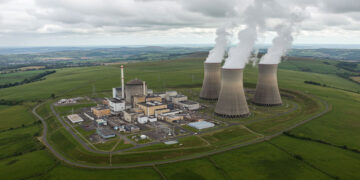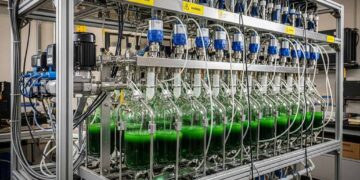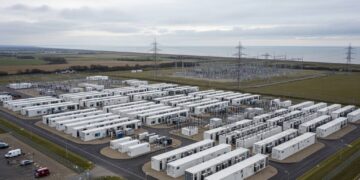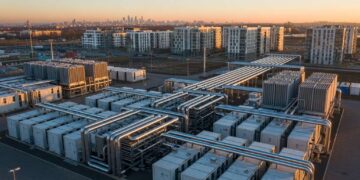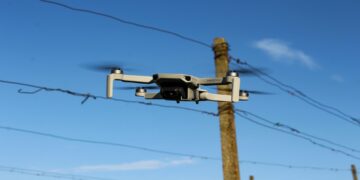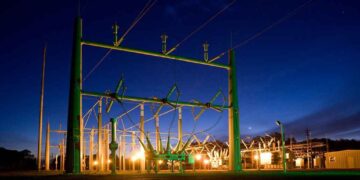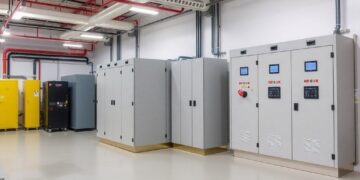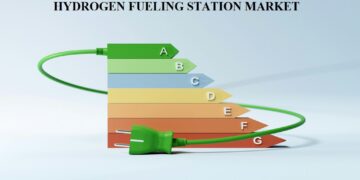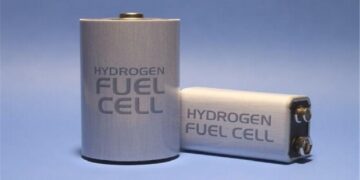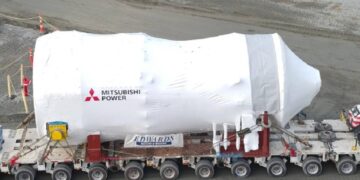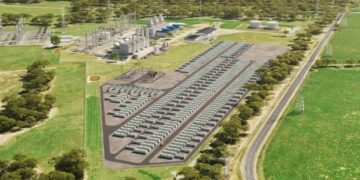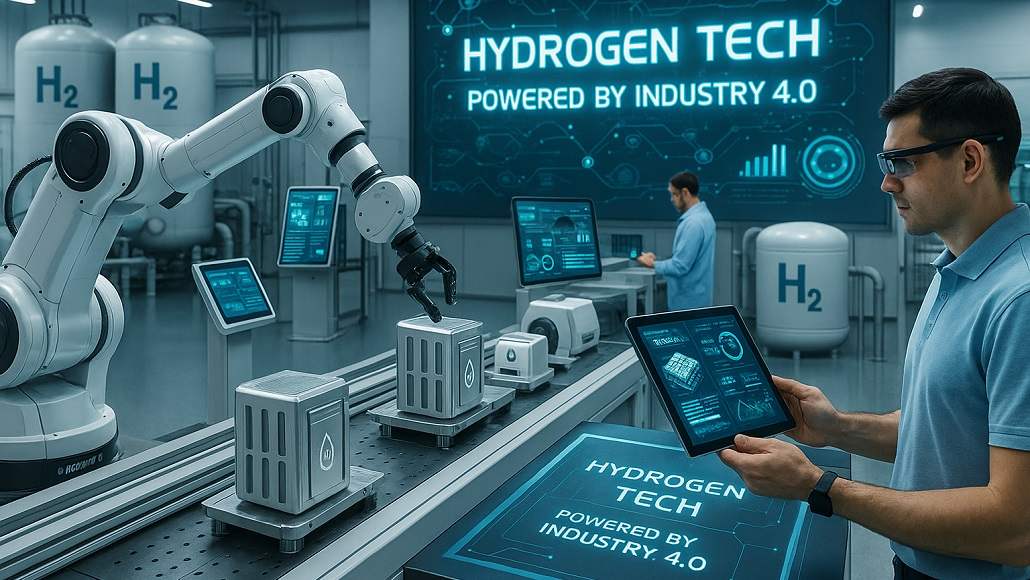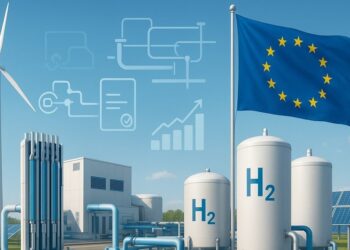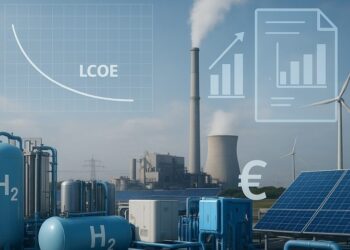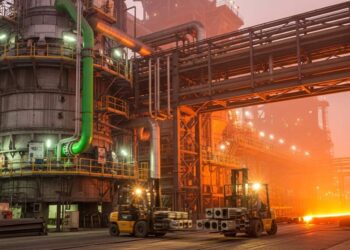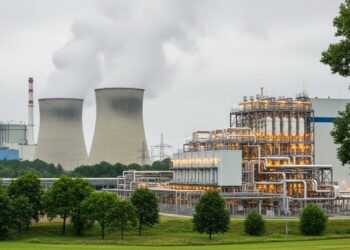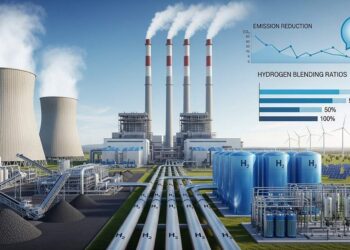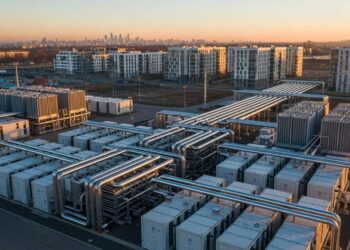The global push for sustainable energy solutions has placed hydrogen (H₂) technology at the forefront of the clean energy revolution. With its promise to decarbonize industrial processes, electricity generation, and transport, hydrogen is leading the charge in both its production and application. At the core of this revolution is the use of cutting-edge robotics and Industry 4.0 technologies in smart assembly lines, transforming the manufacturing and upscaling of hydrogen technologies to address the world’s increasing energy demands.
Smart assembly, driven by robotics and Industry 4.0, is a technological innovation but also a change in paradigm. The integration provides accuracy, scalability, and efficiency in hydrogen-related technology production, such as fuel cells, electrolyzers, and hydrogen storage systems. With increasing global demand for hydrogen, intelligent manufacturing solutions are helping the industry mitigate the obstacles of high cost of production, variability, and scalability.
The Role of Robotics in H₂ Technology Manufacturing
Robotics is now an integral aspect of advanced manufacturing techniques, especially in sectors that require precision and repeatability. High-end robotics is transforming assembly lines by making complicated processes automated and fostering accurate manufacturing, which is reshaping hydrogen technology production. From fuel cell stack assembly to the building of high-pressure hydrogen storage tanks, robotics guarantees the precision needed in these advanced systems.
- Fuel Cell Assembly with Robotic Precision
Fuel cells, which use hydrogen to generate electricity by an electrochemical reaction, need precise and sensitive assembly. This involves layering proton exchange membranes (PEMs), catalysts, and electrodes in multilayered configurations. The layers need to be aligned to the precision of micrometres to make them perform optimally and efficiently.
Robot arms with sophisticated sensors and vision systems are able to accomplish these tasks with superior precision. Where robotics differs from human operators is that they provide efficiency on thousands of fuel cell stacks, which both reduces variation, improves scalability, and generates consistency in the quality of the product produced. By allowing robots to do repetitive tasks 24 hours per day, you can also increase the speed of production to match the upward trend in hydrogen-based systems in the market.
- Automated Welding and Joining for Hydrogen Storage
Hydrogen storage equipment, especially high-pressure cylinders, require strong construction to provide security and longevity. Robotic systems are superior when it comes to welding and joining due to the uniformity and accuracy that cannot be achieved with manual processes. Sophisticated robotic welders use laser welding technology to create faultless joints that can withstand high pressures, ensuring the dependability and security of hydrogen storage equipment.
Industry 4.0: The Digital Backbone of Hydrogen Technology Production
Whereas robotics conducts physical activities, Industry 4.0 provides a digital foundation that integrates robots, data analytics, IoT, and AI to create smart, networked, and intelligent industrial systems. This combination changes the old assembly lines into smart factories with capabilities of adaptive decision-making, real-time monitoring, and predictive optimization, reshaping hydrogen technology
- Digital Twins for Process Simulation
The most revolutionary feature of Industry 4.0 in hydrogen technology manufacturing is the adoption of digital twins. These computer-based copies of real-world manufacturing systems enable businesses to model, analyze, and optimise production processes prior to their execution on the factory floor.
For instance, prior to large-scale production of electrolyzers, digital twins can be used to model different assembly scenarios in order to detect bottlenecks, forecast possible equipment malfunctions, and streamline workflows. This saves risks, lowers costs, and maintains production lines at optimal efficiency.
Example Workflow: Simulating Electrolyzer Production:
Step 1: A digital twin simulates the proper positioning of membranes in electrolyzer stacks.
Step 2: Analytics software identifies inefficiencies based on membrane positioning during assembly.
Step 3: The same, optimized parameters are used on the robotic machines for a quicker assembly that experiences fewer issues.
- IoT-Enabled Monitoring for Real-Time Insights
The Internet of Things (IoT) plays a crucial role in facilitating real-time monitoring of hydrogen technology assembly lines. IoT sensors are integrated into machinery and production systems, providing manufacturers with immediate insights into key process parameters.
As an example, Internet of Things-enabled sensors on robot welders provide manufacturers with immediate feedback while robots are welding hydrogen storage tanks with regard to temperature, pressure, and alignment so that deviations from specifications can be corrected while the welding is taking place. The real benefit of this method is helping to improve quality by eliminating items that can be defective, therefore helping to reduce waste and downtime.
Chart: IoT-Driven Process Monitoring in Hydrogen Applications
| Application | Monitored Parameter | Impact on Production |
| Electrolyzer Assembly | Membrane Thickness, Alignment Accuracy | Improves efficiency and ensures optimal hydrogen production |
| Storage Tank Welding | Weld Seam Precision, Temperature Control | Enhances safety and reliability of hydrogen storage systems |
| Fuel Cell Stacking | Membrane Placement, Compression Force | Ensures consistent performance across all fuel cells |
- AI for Predictive Maintenance
AI-based predictive maintenance solutions are transforming how manufacturers deal with equipment reliability issues common to the hydrogen technology manufacturing process. AI algorithms can forecast equipment failure by analysing previous and present data, allowing for predictive maintenance that reduces downtime and increases asset life.
For example, in a fuel cell stack assembly process, predictive maintenance systems can identify minor robotic arm movement changes that may indicate wear and tear. The maintenance department can resolve these issues in the scheduled downtimes and maximize opportunities for production and overall productivity for the supply chain.
The Intersection of Sustainability and Smart Assembly
The effort to promote hydrogen as a clean energy supply aligns with sustainable objectives in its objective by its very existence. Intelligent assembly methodologies contribute even more to the sustainability of hydrogen production by maximizing resource use, minimizing wastage, and allowing energy-efficient production processes.
- Energy Efficiency in Smart Factories
Industry 4.0 technologies-driven smart factories are built to be energy-efficient. IoT sensors monitor energy consumption at each step of manufacturing, and machine learning algorithms make suggestions for optimizing it.
In hydrogen technology manufacturing, energy-reducing processes, such as welding and coating membranes, can be rendered efficient with real time data in order to decrease total energy input. Everything can be energy efficient in real time, allowing hydrogen manufacturers to reduce their total energy consumption. Renewable energy sources can also be used more often in factory production, such as solar and wind energy, with the goal of further reducing the carbon intensity of hydrogen production.
- Circular Economy Practices
Intelligent assembly methods also help circular economy goals by reducing waste and encouraging recycling. Excess catalyst materials, for example, can be trapped and recycled in the manufacturing of fuel cells, saving money and the environment. In the same vein, flawed parts detected in real-time can be refurbished instead of being scrapped, advancing sustainability in the manufacturing process.
Challenges and Future Potential
Industry 4.0, robotics or otherwise, is a challenging area for manufacturing hydrogen technology. Major barriers to uptake are the costs of an initial investment, the difficulty of retrofitting, and the availability of skilled people.
The potential for smart assembly of hydrogen technology in the future is enormous. Advances in robots, AI, and IoT will continue to improve precision, scalability, and sustainability, making hydrogen a more viable answer for the world’s energy requirements. Furthermore, the development of autonomous systems capable of optimising production workflows on their own will open up new possibilities for smart manufacturing, reshaping hydrogen technology production.
Conclusion
The intelligent assembly revolution, fueled by Industry 4.0 and robotics, is reshaping hydrogen technology production. Through the fusion of precision robotics with networked digital systems, producers are realising unprecedented efficiency, scalability, and sustainability.
With the increasing demand for hydrogen, the use of smart assembly methods will be vital in ensuring that the industry meets the demand while respecting the parameters of sustainability. The fusion of advanced manufacturing technologies and clean energy objectives holds a possible future where hydrogen can fully live up to its expectation as a pillar of global energy shifts.
This revolution is not simply about bolstering manufacturing capacity; it is about building a resilient future fuelled by ingenuity, hardiness, and collaboration.




